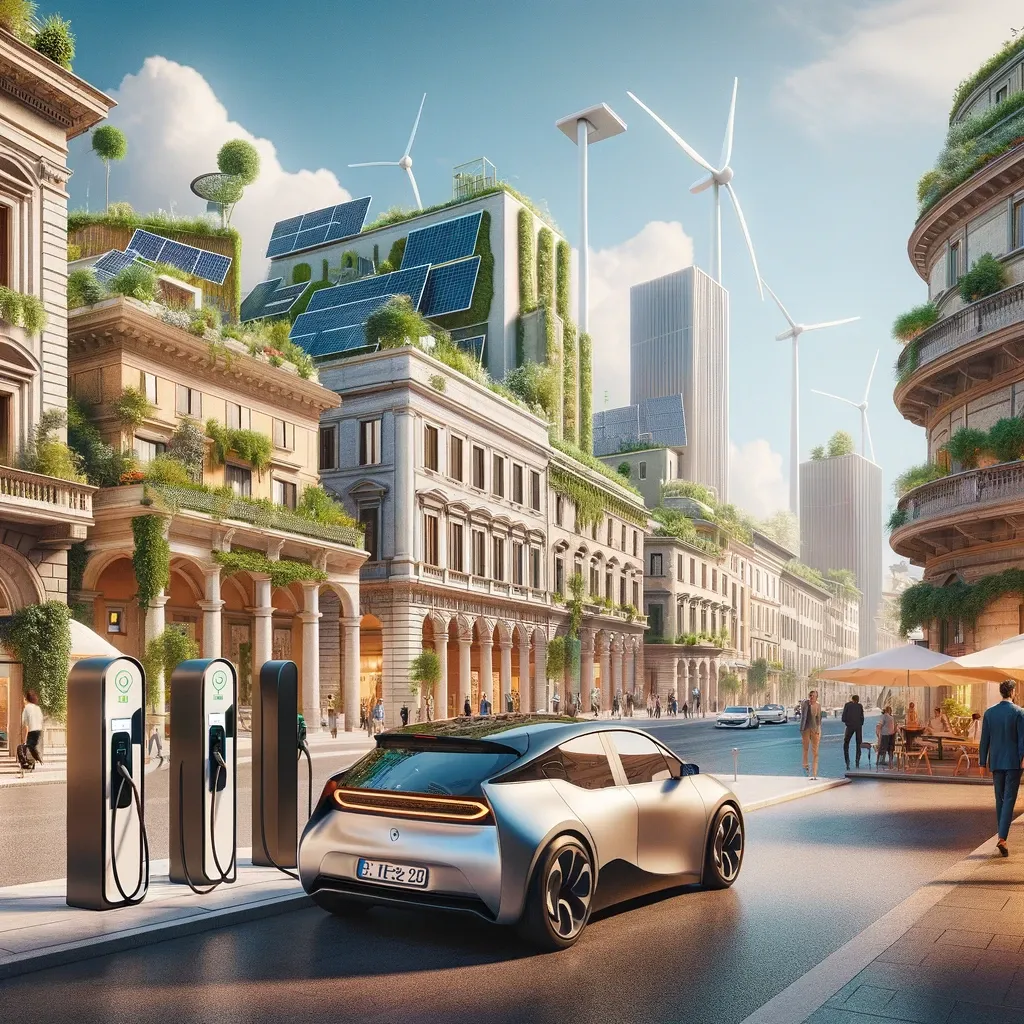The Green issue: madness for the right-wing but crucial for the country. More fear and theatricality.

Although the European Parliament has approved the text of the directive on the energy performance of buildings
, this is still good news, even though many measures have been softened compared to the text adopted a year ago in Strasbourg to meet the states' demands (and hence the EU Council's veto in the tralogue).Not yet "another stupidity", as expressed by, among others, the Deputy Prime Minister and Minister of Infrastructure and Transport Matteo Salvini and the President of Lombardy Attilio Fontana.
Again there was a theatrical show with the sounding of the red card and whistle in front of the camera of the leader of the Liga party, Angelo Ciocca. Another show for him, from which the chair of the meeting asked him to step back, calling his gesture "striking and unconditional" (but unfortunately there are previous instances). Another embarrassment for Italy, which continues, even when it can avoid it, to take conservative positions.The opportunities offered by the directive are enormous, but it is easy to seek support by feeding fears. Rightful fears in the wake of crisis, pandemic and war. But you can't be fooled on the numbers. In the EU, buildings are responsible for 40% of energy consumption and 36% of direct and indirect greenhouse gas emissions. In Italy, the building sector accounts for almost half of final energy consumption and about 20% of national energy-related greenhouse gas emissions, and it is one of the sectors where they are difficult to reduce. Even the incentives for energy efficiency, in place since 2007, have not made much difference, because the incentive schemes must be linked to a reduction in emissions, which in this sector have fallen by only 12% since 2005.
But there's another aspect to it.
As Davide Panzeri, Europe Program Manager at Eco, the Italian climate thinking group, explained recently, "the modernization of the national housing stock offers great opportunities to revitalize the construction sector, the main engine of domestic economic growth." And according to estimates by the National Association of Builders, one billion euros of investment in construction creates an added value of 1 billion 100 million and generates more than 15 thousand new direct and indirect jobs.One more piece of information: according to the 2023 Building Energy Certification Report by ENEA and CTI (Italian Energy and Thermal Engineering Committee), by 2021, 54% of buildings were in classes F and G compared to 57.8% in 2021. And if in a country like Italy, where 53.7% of buildings were built before 1970, energy efficiency is more complex, then surely the value of the property also depends on the energy performance certificate.




Will there be a progressive commitment to install solar panels on new public buildings (from 2026 for the largest by 2030)?
Starting in 2025, will the incentives for boilers using fossil fuel sources disappear? But if we are not ready to do so, it is futile to talk about an energy transition. Transition is a process that must be as short as possible, given the risks of climate change. It cannot become a perpetual condition. And it cannot be for Italy while the rest of Europe is moving forward.However, the adopted text provides member states with greater flexibility and independence in decision-making. Governments must develop a strategy and invest in a national plan, taking into account the complexity of national heritage, the income of its residents, and the national energy class system. The European Union will not force us to implement a dreadful system of harmonized energy classes; it is afraid to do so in light of the numerous problems already created during the election campaign. Moreover, the right-wing faction that voted against the directive is not backing down. "We need to change course to revise it, sending the left forces home and bringing a new centrist majority to Brussels," said Salvini. He declared war on one of the few legislative initiatives of the Green Deal that still remains strategic, despite the inevitable cuts and changes in the trialogue.
Comment
Popular Posts
Popular Offers

Subscribe to the newsletter from Hatamatata.com!
Subscribe to the newsletter from Hatamatata.com!
I agree to the processing of personal data and confidentiality rules of Hatamatata










